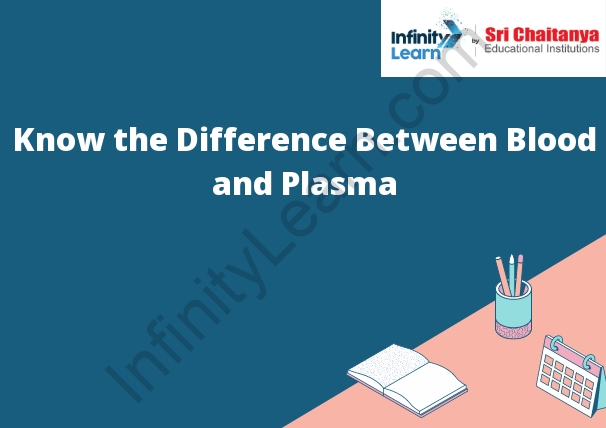Table of Contents
Difference between Blood and Plasma – Introduction
Blood is a fluid that circulates in the human body. It is composed of plasma, red blood cells, white blood cells, and platelets. Plasma is the clear, yellowish fluid that makes up the majority of blood. It is a water-based solution that contains proteins, salts, glucose, lipids, and minerals. Red blood cells are responsible for carrying oxygen throughout the body. White blood cells are responsible for fighting infection. Platelets are responsible for clotting blood.

Know the Difference between Blood and Plasma
Blood is a fluid that circulates in the body, carrying essential nutrients and oxygen to the cells and removing carbon dioxide and other wastes. It is composed of plasma, red blood cells, white blood cells, and platelets.
Plasma is the liquid part of blood. It is composed of water, proteins, electrolytes, and other substances. Plasma helps to circulate the blood and carries dissolved nutrients and oxygen to the cells.
A Descriptive Difference between Blood and Plasma
Blood is a fluid consisting of plasma, red blood cells (erythrocytes), white blood cells (leukocytes), and platelets that circulates in the cardiovascular system, carrying nutrients and oxygen to the body’s tissues and removing carbon dioxide and other wastes. Plasma is the liquid portion of blood, without which blood would not clot. It is a clear, straw-colored fluid that makes up 55% of the blood’s volume. It is made up of 90% water and 10% proteins, including albumin, globulins, and fibrinogens.
Blood
pressure is the force of the blood pushing against the walls of the arteries as it circulates through the body. Blood pressure is usually measured in millimeters of mercury (mm Hg).
The top number is the systolic blood pressure, which is the pressure when the heart contracts. The bottom number is the diastolic blood pressure, which is the pressure when the heart relaxes.
Functions of Blood
The main functions of blood are to transport oxygen and nutrients to tissues, remove carbon dioxide and waste products from tissues, and to regulate body temperature. Blood is also involved in the immune response, and helps to prevent infection.
Plasma
is a state of matter that is ionized gas. It is composed of free electrons and atoms or molecules that have lost one or more electrons. In a plasma, the negatively charged electrons are free to move about, and the positively charged ions are fixed in place.
Plasma is created when a gas is heated to a high enough temperature that the atoms or molecules break apart into ions and electrons. The electrons are then free to move about, and the ions are held together by the electric force.
Plasma is found in the sun and other stars, in the upper atmosphere of Earth, and in neon signs and fluorescent light bulbs. It is used in television screens and computer monitors, and it is the basis for plasma physics and plasma technology.
Function of Plasma Membrane
The plasma membrane is a lipid bilayer that separates the cytoplasm from the extracellular environment. It is composed of two layers of phospholipids, with the hydrophobic tails pointing inward and the hydrophilic heads facing out. The plasma membrane is highly selective in what it allows to pass through it, and is responsible for maintaining the cell’s internal environment. It regulates the movement of molecules in and out of the cell, and controls the entry and exit of ions and other substances.
Blood vs. Plasma Composition
The difference between blood and plasma composition is that blood contains red blood cells, white blood cells, and platelets, while plasma does not. Plasma is the clear liquid component of blood that contains water, proteins, electrolytes, and other substances.
What is the Difference between Plasma and Blood?
Plasma is a straw-colored fluid that makes up about 55% of the blood. It contains water, proteins, electrolytes, and other substances.
Blood is a red fluid that contains cells and plasma. It makes up about 45% of the blood.
Storage of Blood and Plasma
The blood and plasma are stored in a refrigerator at a temperature of 2 to 6 degrees Celsius.
Functional Differences of Blood and Plasma
There are several functional differences between blood and plasma. Blood is composed of red blood cells, white blood cells, and platelets, while plasma is composed of water, proteins, electrolytes, and other dissolved molecules. Blood is thicker than plasma and has a higher concentration of red blood cells. Plasma is thinner than blood and has a higher concentration of proteins. Plasma also has a higher concentration of electrolytes than blood.








